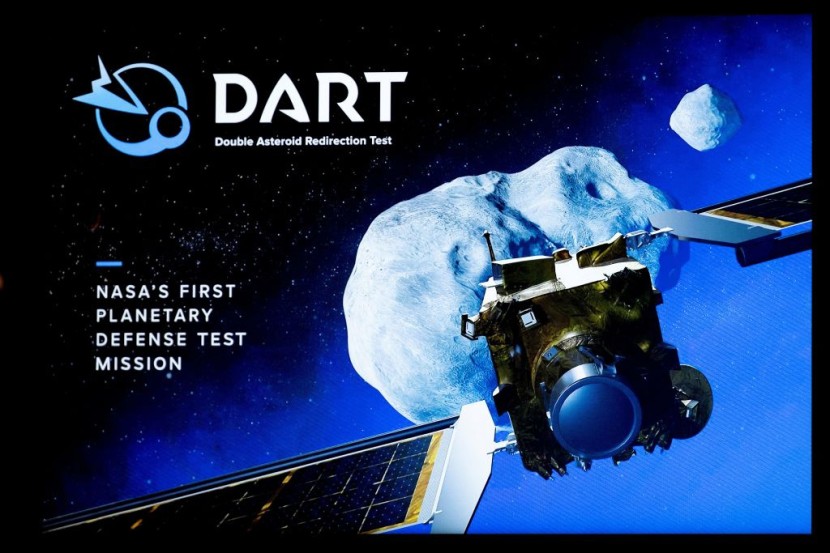
NASA wasn't going to pass up the chance to use its most potent satellite observatories to record their historic ambush of an asteroid. New photos captured by the Hubble and James Webb telescopes and released on Thursday by NASA and the European Space
Agency depict the moment the DART spacecraft collided with the asteroid Dimorphos. DART was created as the first kinetic impact mitigation experiment for people, which is a long way of saying the mission intended to crash a spaceship into an asteroid to test if the collision may change the asteroid's orbit.
NASA's DART Asteroid Impact Mission
According to CNET, the method may one day be utilized to shield Earth from asteroids and comets that pose a hazard to our planet. We are not in any danger from Dimorphos or Didymos, the bigger asteroid around which the moonlet revolves. In fact, no known asteroids currently represent a serious hazard.
For the first time, Webb and Hubble simultaneously observed the same target in an effort to capture the moment of impact as well as early and subsequent images of the crash site. According to Hubblesite, DART investigative team leader Andy Rivkin said, "This is an unprecedented view of an unprecedented event."
Check out Hubble’s “after” shots from #DARTMission impact!
— Hubble (@NASAHubble) September 29, 2022
Earlier this week, @NASA intentionally crashed a spacecraft into Dimorphos, a non-threatening asteroid moonlet in the double-asteroid system of Didymos, in a test of planetary defense: https://t.co/pe2qeFDYoS pic.twitter.com/VQ5X1pQlEy
Hubble uses visible light to display the impact on the photographs, whereas Webb uses an infrared camera to acquire the pictures. The point of impact, which remained brightly lit for several hours, is seen in the photos' bright center. There are also material plumes that have been expelled from the asteroid's surface as a result of the crash.
DART, you rocked out there. 🪨#ICYMI, Webb and @NASAHubble both captured the effects of #DARTMission colliding with an asteroid as a test of planetary defense. This is the first time both telescopes observed the same target at the same time: https://t.co/CuVzJXyK2F pic.twitter.com/QvgoqBQd8r
— NASA Webb Telescope (@NASAWebb) September 29, 2022
Jian-Yang Li of the Planetary Science Institute, who oversaw the Hubble observations, stated of the data, "When I saw the data, I was literally speechless, shocked by the exquisite detail of the ejecta that Hubble acquired."
To understand how the collision altered Dimorphos, both in terms of its structure and its course through space, astronomers will continue to examine observations and data from the event with telescopes situated both in space and on the ground.
Read Also : Scientists Investigate Fungi That Could Potentially Help Cancer Cells Grow Uncontrollably
Importance of DART Mission
Per Independent, the Japanese Hayabusa 2 mission collected part of the asteroid Ryugu's composition in 2019 using an impacting tool. The samples were then sent back to Earth for analysis in late 2020. The same material streamers shown in the new photographs of the DART impact may be observed in images of the ejecta launched off of Ryugu.
University of Central Florida Planetary Scientists Phil Metzger discovered that the tremendous surface tension forces in water may cause streamers to develop when an item is thrown into the water. He said that recent studies on the Ryugu ejecta streamers could provide a hint. When granular material has particles of sufficiently various sizes, streamers may develop.
This occurs because the granular material, which is effectively microscopic boulders, loses energy with each bounce, just like a bouncing ball does on the Earth's surface. This implies that some gravel will tend to condense into an area of space when enough gravel is bouncing around in the microgravity of space because interactions between individual rocks deplete their ability to move farther.
According to Dr. Metzger, this mechanism, called "granular collapse," has been studied in microgravity experiments. It is believed to have had a role in the formation of planets and asteroids from the protoplanetary disk surrounding the Sun billions of years ago.
These findings demonstrate the value of doing genuine space experiments, Dr. Metzer said, "since we never know what we may observe. The universe is fascinating and complex." Engineers at NASA and the Johns Hopkins Applied Physics Laboratory highlighted that nothing on Earth can really simulate an asteroid in the run-up to the DART mission, despite their best modeling and lab tests.
DART was a crucial test not just to see whether NASA could hit and move an asteroid with a spacecraft, but also to learn how the asteroid's material responds to such an impact. This knowledge is crucial if a spacecraft similar to Dart is ever employed to defend Earth from a deadly asteroid.
@YouTube
© 2025 HNGN, All rights reserved. Do not reproduce without permission.








